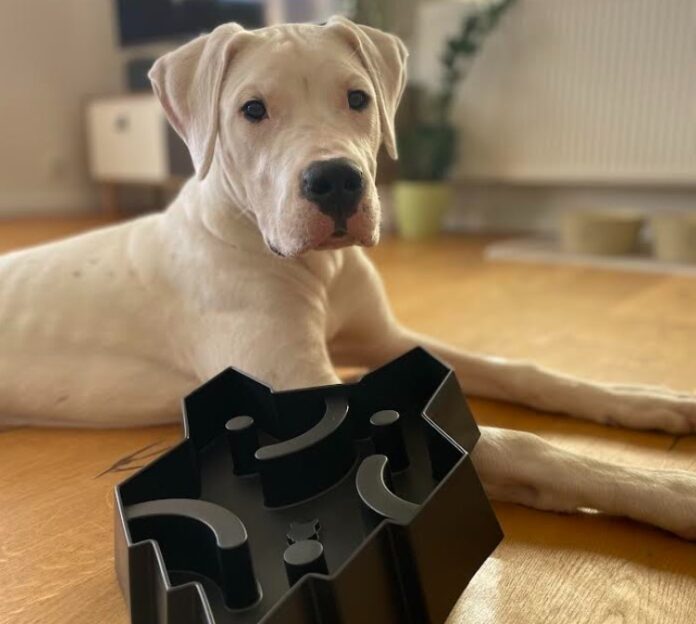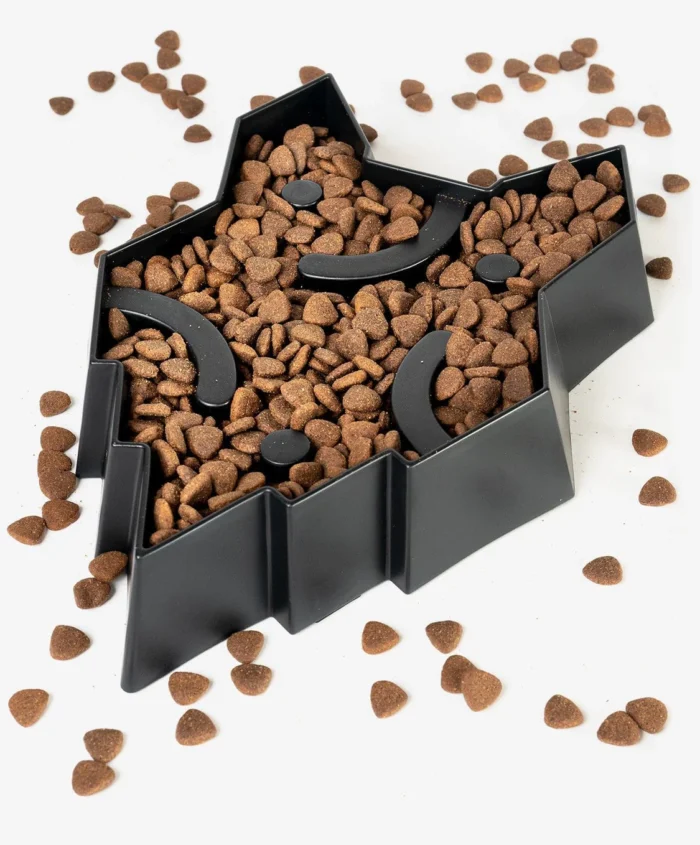
Bloat stands as one of the most dreaded nightmares for any dog owner. This condition is a harrowing and potentially life-threatening medical emergency that requires immediate attention. Bloat occurs when a dog’s stomach fills with gas, causing it to twist upon itself. The consequences can be severe, leading to restricted blood flow, organ damage, and shock.
Thankfully there are some things you can do to help prevent bloat like using a puzzle bowl for meal times.
These maze bowls have a range of benefits. They’re designed to make your dog slow down while eating. They can’t take huge gulps of food because their kibble is trapped in the maze that the ridges in the bowl create.
They have to pick the pieces out a few at a time and eat them slowly. This helps reduce overeating, stomach upset, vomiting, and bloat as mentioned before.
But, maybe you’re getting your first dog and still learning things. Maybe you haven’t heard of bloat. So, what is bloat, and how exactly does a puzzle bowl help prevent it?
What is Dog Bloat?

Scientifically referred to as Gastric dilatation-volvulus (GDV) this condition occurs when a dog’s stomach becomes distended with air, food, or fluid and subsequently twists over or flips on itself. This twisting results in the loss of circulation to the digestive system, hindering the proper passage and digestion of food. Recognized as a critical medical emergency, immediate attention from a veterinarian is imperative, as surgical intervention is often necessary to rectify the twisted stomach, preventing fatal outcomes within a matter of hours.
Fortunately, when promptly identified, the survival rate for bloat is relatively high, and there are preventive measures that can be implemented at home.
How can a Puzzle Bowl Prevent Bloat?
So, how can a puzzle bowl aid in preventing bloat? One major contributor to bloat is a dog’s tendency to gulp air while consuming food. The act of taking in large mouthfuls can lead to the ingestion of excess air, causing the stomach to become overly distended and eventually twist.
A slow feeder like our Fenrir Puzzle Bowl, with its intricate design and compartments, encourages slower eating habits, reducing the likelihood of excessive air intake and providing a proactive solution to mitigate the risk of bloat in dogs. Instead of being able to take a huge mouthful of food all at once, they’ll only be able to pick up a few at a time.
Some dogs may choose to eat the kibble one piece at a time from the bowl while others may scoop a few out onto the floor with their paw before picking it up. Either way is fine.
The whole goal is to slow your dog down while eating.
Reducing their eating speed serves a dual purpose ─ it allows their stomach to settle between bites, preventing the risk of bloating associated with consuming excessive food in a short span, and it minimizes the intake of air, a known factor contributing to bloating.
If you have a dog that often flips their dish over, you can also try a raised platform for their bowl to help keep them from flipping over the dish. While there is no scientific evidence that a raised dish helps reduce bloat, it certainly won’t hurt.









